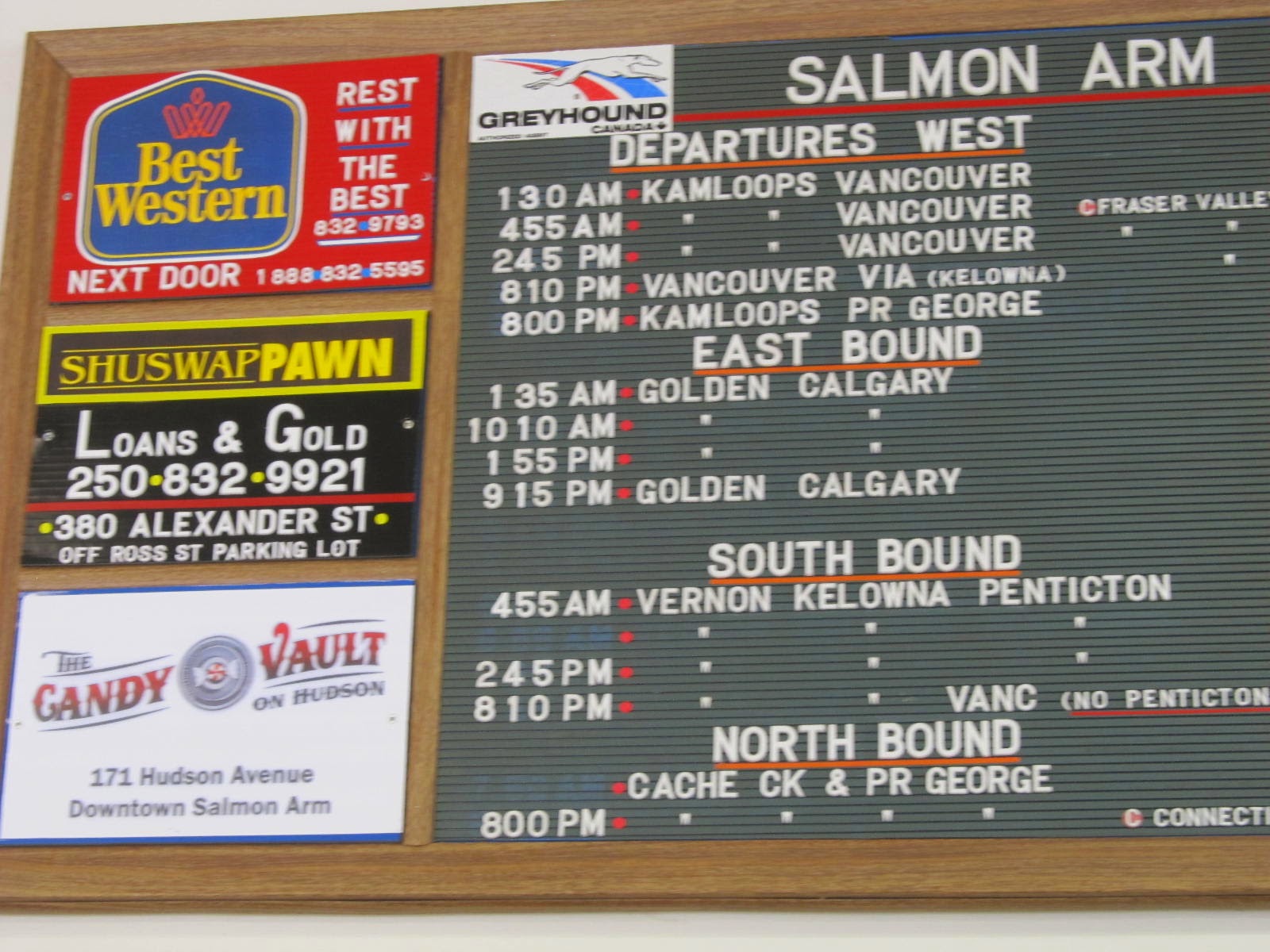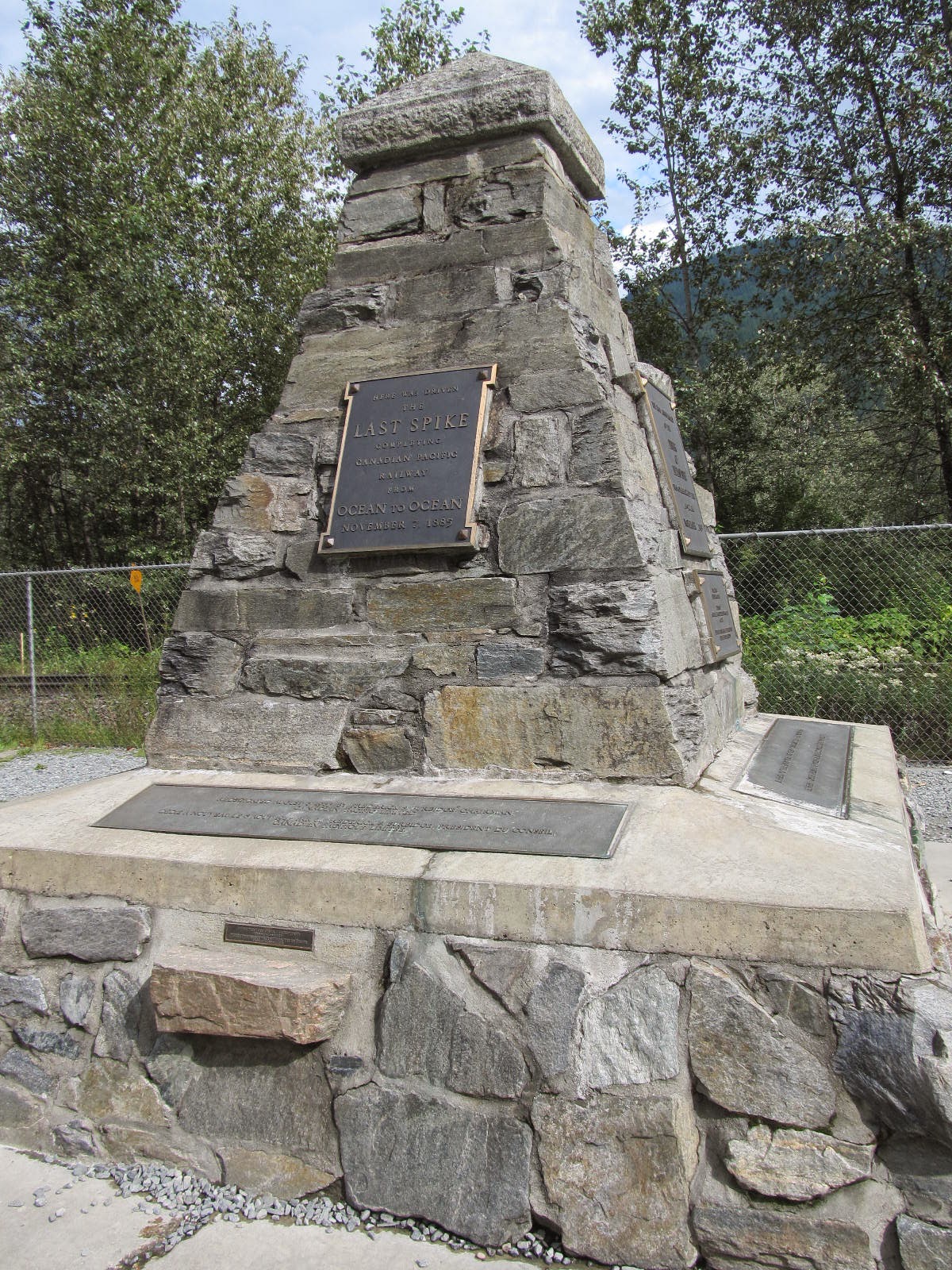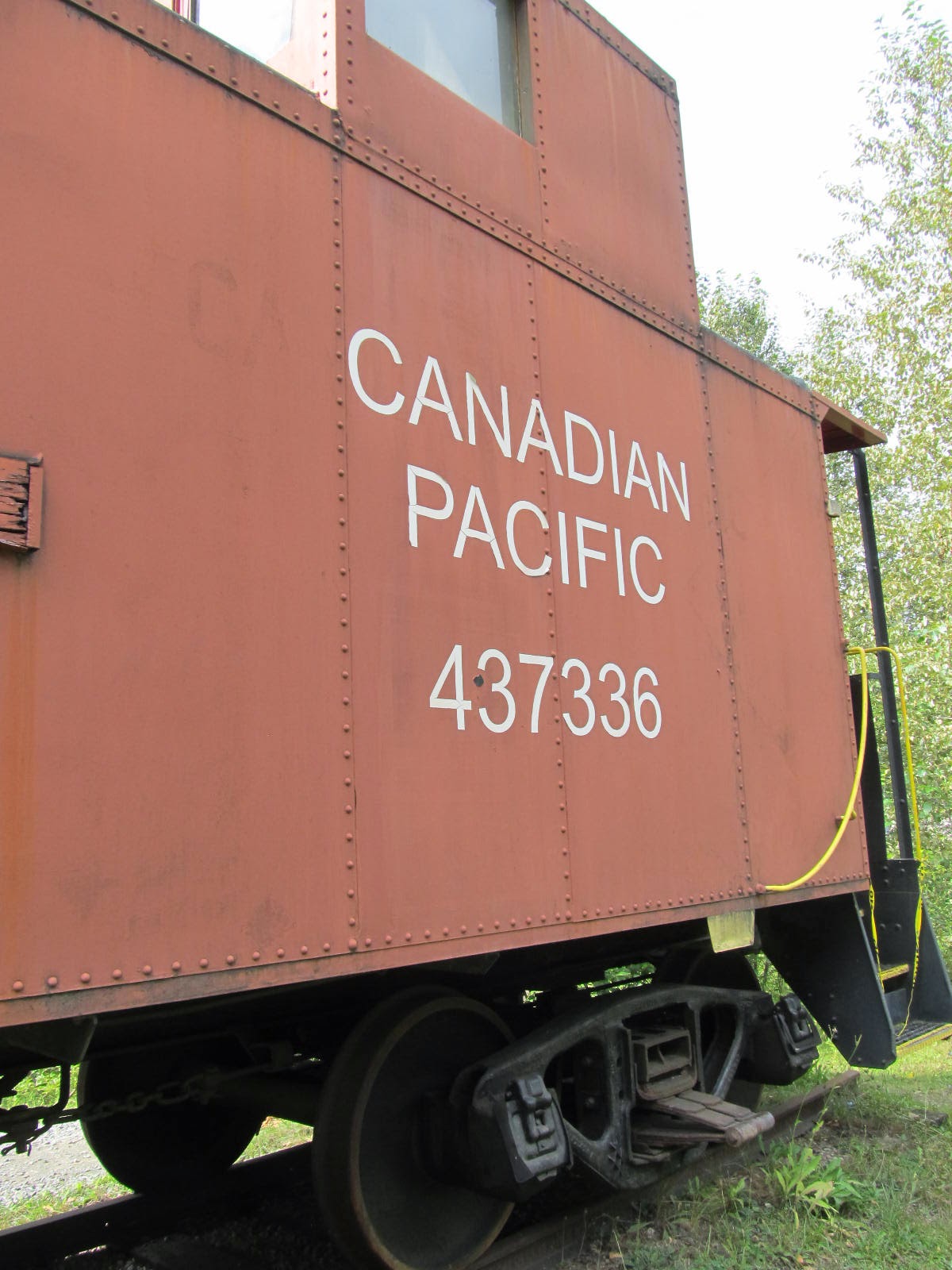Tracks of the StoneBear BNF = Banff, BC/ Alberta journey
ROF = Ring of Fire journey
British Columbia/ Alberta, Canada
August 19, 2014 BNF 4
Craigellachie British Columbia The Last Spike
From Kamloops to Revelstoke, BC
This BNF- RT ... Banff Road Trip had some significant historical places along the way. Left Kamloops heading east on TransCanada Hwy 1 heading for Lake Louise/ Banff. The likely destination today is Revelstoke, British Columbia.
On the Tracks of the StoneBear RTs the daily target/ town of destination ETA = Estimated Time of Arrival is a guide. The key word being "Estimated". The rule on these RTs is to stop at the small towns/ places and see what it is that makes this place unique. All places are interesting; Most places are unique. It's often worth the time to spend more time and find out.
The drive from Kamloops, BC... which still has a Hudsons Bay Company store... heading east takes you through some really unique geological changes...
... through... high arid plains... with sagebrush along the valleys... into Canadian forest mountains...
through Chase, BC... through beautiful watershed lakes... fishing the South Thompson River at Prichard Station.
... Shuswap Lake at Salmon Arm, BC, then along the Eagle River Valley. Really beautiful.
About 3/4ths way from Kamloops to Revelstoke we come to a sideout... "Craigellachie". ... let's check this out.
Craigellachie is not a city/ town on the map. There was a small village nearby here when building the railway.
The significence of this place is this is where the transcontinental railroad tracks met/ joined... and completed the railway line across the continent. The Canadian Pacific RR was completing it's coast to coast RR track and this is where the last spike was driven.
?Where did they come up with the name "Craigellachie"? it's better to read below...
***********
from wikipedia:
Craigellachie (pronounced /krəˈɡɛləxi/, but /k/ or /h/ can be substituted for the /x/) is a locality in British Columbia, located several kilometres to the west of the Eagle Pass summit between Sicamous and Revelstoke.[1] Craigellachie is the site of a tourist stop on the Trans-Canada Highway between Salmon Arm and Revelstoke.
It was named after the village of Craigellachie on the River Spey in Moray, Scotland, the ancestral home of SirGeorge Stephen, the first president of the Canadian Pacific Railway (CPR). At a critical time in the railway's development, Stephen travelled to Britain to raise desperately needed capital funding; when he succeeded, he telegraphed his associates in Canada quoting the familiar motto of Clan Grant: "Stand fast, Craigellachie!"
The Canadian Craigellachie is most famous for being the site of the "Last Spike" of the CPR, driven by Sir Donald Smith, a director of the CPR, on November 7, 1885.[2]
*****
In the US we know this point of the completion of the transcontinental RR at Promentory point, Utah on May 10, 1869. It was a significant step in the US doctrine of "Manifest Destiny"... that the US should be a nation from coast to coast... a true continental nation from the Atlantic Ocean to the Pacific. This RR line was a significant early step to make development of the vast wilderness of America possible.
The real CP= Canadian Pacific RR tracks are less than 30' away. This IS THE place!
This sideout was not a big spectacular museum... but this was a VERY significant historical site for Canada in the wilderness of British Columbia.
A work force of about 6,000 men, 2/3 were Chinese RR track laborers. And there were many deaths while working on this - and most- rail lines in primitive rugged wilderness in all seasons. These must have been some really tough/ rugged men and deserve a lot of respect to complete this line in difficult conditions.
And what luck to be there when a Canadian Pacific train rolled through ... not 30' away... close enough to feel the rumble and power of The Canadian Pacific RR on the move.
The real CP= Canadian Pacific RR tracks are less than 30' away. This IS THE place!
This sideout was not a big spectacular museum... but this was a VERY significant historical site for Canada in the wilderness of British Columbia.
A work force of about 6,000 men, 2/3 were Chinese RR track laborers. And there were many deaths while working on this - and most- rail lines in primitive rugged wilderness in all seasons. These must have been some really tough/ rugged men and deserve a lot of respect to complete this line in difficult conditions.
And what luck to be there when a Canadian Pacific train rolled through ... not 30' away... close enough to feel the rumble and power of The Canadian Pacific RR on the move.
You never drink twice from the same stream.









































